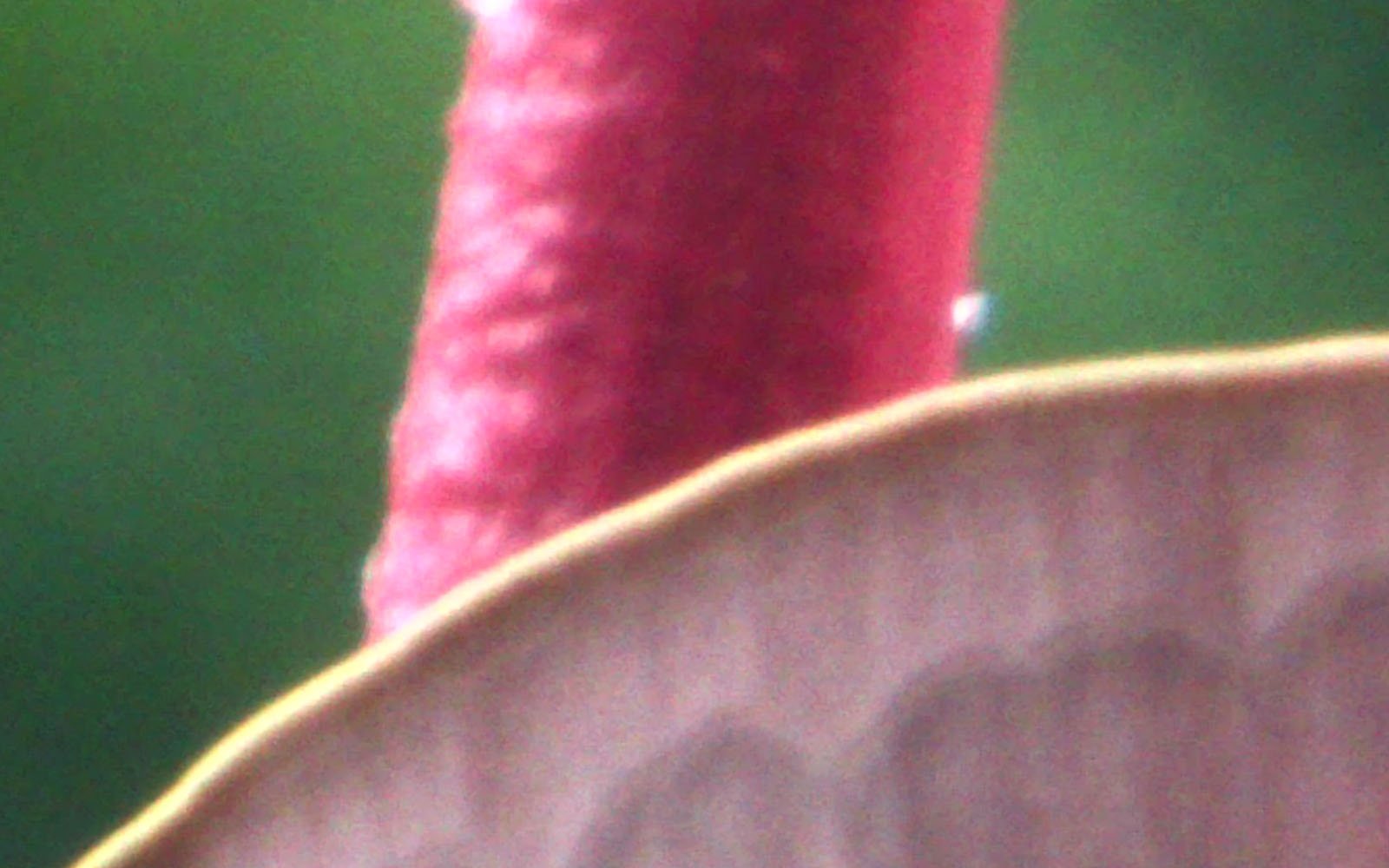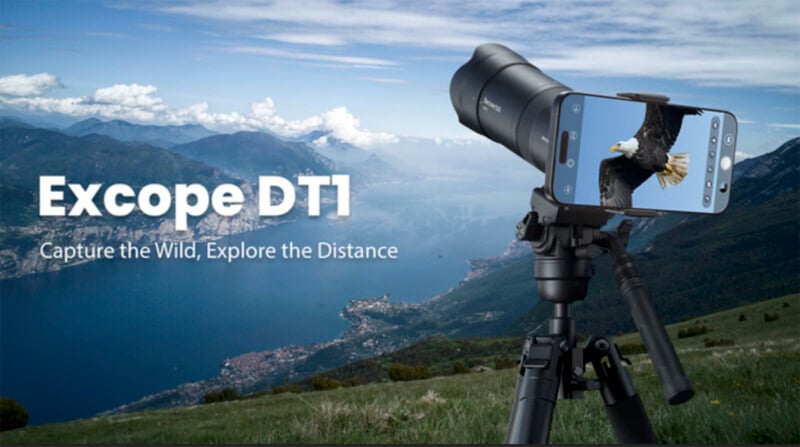Real Photos From the Excope DT1 Kickstarter Reveal Its Limitations
![]()
Beaverlab Technology, the maker of the Excope DT1 camera currently on Kickstarter, has a response to PetaPixel‘s exposé, and it is mainly one of contrition.
For complete details on the situation, please read the original story published yesterday. However, in summary, Beaverlab Technology launched a portable and affordable telephoto camera that works alongside a user’s smartphone. The camera promises features that are ambitious, to say the least, and the Kickstarter campaign features some very misleading images.
Since the story was published yesterday afternoon, which illustrates how the DT1 makes impossible promises regarding photo and video quality, the campaign has earned another $75,000 in support from a few hundred more people.
Beaverlab has finally obliged PetaPixel‘s request to send genuine sample photos shot with the actual Excope DT1 camera. The four photos the company sent pass the sniff test and, more importantly, show all the right signs in Exiftool. The chances that these four sample shots are legitimate are very high.
Without further ado, these images show what the Excope DT1 can do regarding image quality.









No, these images aren’t great. Further, they were all shot at an actual focal length of 3mm with a nominal aperture of f/1.8, so they aren’t illustrative of what users can expect when using the Excope DT1 for telephoto subjects. Remember, a type 1/1.8-inch sensor is small, so there is a significant crop factor. In this case, the crop factor should be roughly five (an APS-C image sensor has a crop factor of 1.5).
However, the company also sent some video samples, including one that PetaPixel suspected was real from the beginning — the close-up of the Moon seen on the Kickstarter page.
Some of the samples don’t look that bad, but they don’t look good either and they at least show content shot at longer focal lengths.
For both photography and video applications, the Excope DT1 seems to require bright light, a lot of separation between the subject and the background, and minimal movement in order to capture anything close to the lofty promises on the Kickstarter page (even then, it’s arguable that they do). Things rapidly deteriorate once the camera is put in situations that aren’t optimal.
A Supposed Misunderstanding
“We take full responsibility for addressing the concerns raised in the article,” Beaverlab says in its rather lengthy response to PetaPixel
“First of all, we appreciate your feedback regarding the misleading photos on the Kickstarter page. It was an oversight not to disclose that some of the images were sourced from a design website for reference purposes. We have since updated the page for transparency,” the company continues.
When Beaverlab says it has updated its Kickstarter page for “transparency,” that is partially true. On several images, newly-added dark gray text at the bottom says, “Images are for effect reference only.”

Of course, not all of the images on the Kickstarter page include this dark gray disclaimer. In fact, some of the more troublesome images don’t.
The very first image potential customers will see as they navigate the Kickstarter page is one showing the Excope DT1 in a mountainous landscape, with the promise, “Capture the Wild, Explore the Distance.” On the back of the Excope is an attached phone showing a very close-up shot of a bald eagle.

Could the Excope DT1 have captured this photo? Maybe. Because it is so small, it’s impossible to tell if the quality is good.
That said, this eagle photo is not among Beaverlab’s “real samples.” It likely falls into the same category as the Iberian lynx and kingfisher photos from the previous article: not indicative of the Excope’s actual results.
What about the photo samples included in the following graphic, which showcases the Excope DT1’s impressive-sounding features?

The reptile image is from Freepik.
The toucan, presented as a screenshot from a 4K video shot by the Excope DT1, is also a stock photo.
A little further down is another graphic without a disclaimer. It touts the DT1’s 400mm focal length and the ability to zoom 200 times using optical and digital zoom. If this mourning dove photo doesn’t have a disclaimer, it is probably shot with the DT1, right? Wrong.
The first thing any visitor will see on the Kickstarter page is a video making numerous bold (impossible) promises regarding image quality, all while people are shown holding the Excope DT1. And there’s no disclaimer there.
“Regarding the sample photos provided earlier, we apologize for the mistake. Those images were initially sourced from a design website to illustrate the desired effect of the product. It was an error on our part not to clearly distinguish between renderings and actual photographs. We have replaced them with original photos for clarity,” Beaverlab tells PetaPixel. As we note above, that’s not the whole truth.
Beaverlab Stands Behind the Excope DT1
“As a new company in the field of innovative technology, we acknowledge that there have been some oversights in our product release, and we are fully committed to improving in this regard,” the company says. “However, we want to emphasize that our products are crafted with dedication and passion. Our commitment to continuous improvement is unwavering, whether it pertains to optical design or software optimization. As such, the Excope DT1 prototype is currently undergoing constant refinement. This is why we have pledged to provide updated sample photos for reference in the future. We firmly believe that the final version of our product will not disappoint.”
The company also notes that it has had successful Kickstarter campaigns, which appears to be the case. There is no reason to suspect that anyone who backs the Excope DT1 won’t receive the Excope DT1.
However, it remains unclear whether they will receive a product that does what they believed it would do.
A YouTube Review Gone Missing
On the original version of the Kickstarter campaign, a video “review” from HansTechTalk was featured, lending credence to the notion that the Excope DT1 is impressive and can do everything Beaverlab says it can do. While that review is still live on YouTube, it is no longer featured on Kickstarter. Beaverlab didn’t acknowledge the video in its response to PetaPixel.
The comments on the video are almost universally strange. Many of them are from users with unusual names and minimal YouTube presence, which is fine in and of itself. However, many comments say virtually the same thing in slightly different ways. They feel artificial and manufactured. It’s up to readers to decide how they feel about the comments but look at a few of the top ones.


Half-Truths Are More Dangerous Than Whole Lies
Putting a disclaimer on some misleading images, but not all, makes the images without a disclaimer seem more legitimate, too. If a company tells you that some photos are just for illustrative effect, it can make other photos appear like they must be real. Why would only some misleading images be labeled but not all?
“We developed the Excope DT1 with the aim of addressing the weight and price issues associated with telephoto photography. The high cost and cumbersome equipment can often discourage photography enthusiasts. Through continuous efforts, from product design to optimization, we have strived to assist more users by making telephoto shooting more convenient and cost-effective,” Beaverlab says.
Customers can now see actual Excope DT1 sample images, at least here on PetaPixel, and decide if the product will serve their needs at a price that makes sense for them.
$199 is a very accessible price and if people can take photos using the Excope DT1 they couldn’t have otherwise afforded to take, and the photos make them happy, then that’s a great outcome.
However, people must have realistic expectations about what they will be able to achieve with a product like the Excope DT1, or any camera with such a small image sensor. Nobody can engineer their way around physics — at least not for $199.